About two hundred years ago, early Schwalm Whitework gradually transitioned to the later style of Schwalm whitework. The transition took place over a relatively short amount of time. Unsurprisingly, since the Schwalm region is narrow and the transitional period was short, it is difficult to find traditional examples with a combination of both.
A customer who loves both early and later patterns asked for historical examples from the transitional period containing both. I was able to find three pieces in my collection that have a slight combination. I will show these treasures on my blog over time; here is the first. Unfortunately, it is no longer in its original condition. Because of the width, I think it was once used as a door hanging.
The piece is worked on linen with a 19/cm thread count. The border in all measures 20 cm X 36 cm; the embroidery only has a height of 16 cm. The embroidery is bordered with two different needle-weaving hems – one with spiders and the other without.
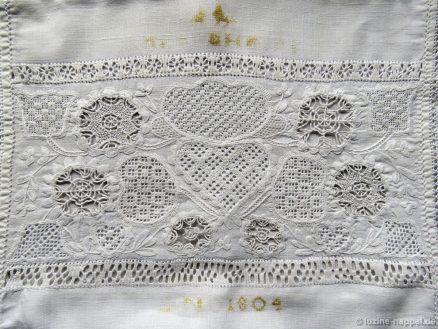
The year 1804, Cross stitch initials, and small Cross stitch ornaments are all additions. Unfortunately, threads dyed yellow or gold fade sooner than threads dyed other colours. In the enlargement I can see the initials AKRHSI separated by ornaments, two birds,
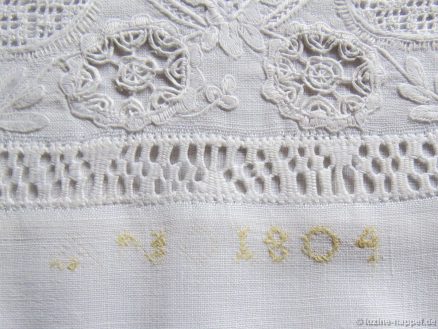
It is notable that no Coral Knot stitches and no Chain stitches were worked. The outlines were embroidered using wide Stem stitches, Eyelash stitches, and Satin and Blanket stitch scallops.
Stems were also embroidered with wide Stem stitches. Some stems were made with a double line filled with Herringbone stitches, as was common in early Schwalm whitework. Leaves were worked with Blanket stitches. No tendrils were stitched.

The only filling pattern without thread withdrawing is found in the two areas on the left and on the right of the center motif.
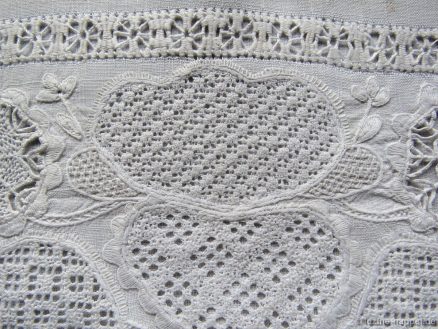
It is made with pairs of Blanket stitches. The Blanket stitches are not lying on top of the fabric; rather, they are stitched through the linen.
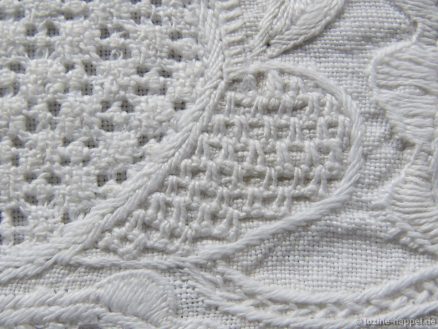
The six circles were filled with two different patterns of needlelace.

All other motifs were filled with openwork patterns.
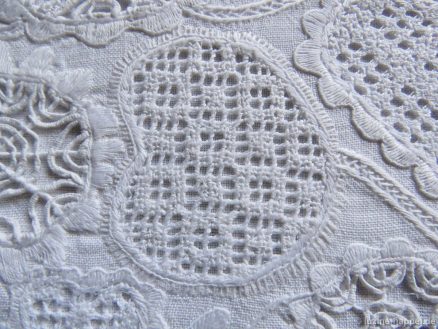
The above motif shows a Rose stitch pattern in an openwork Cable stitch grid.
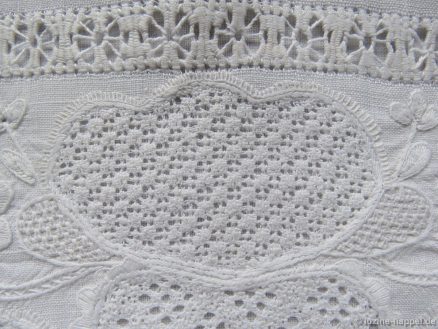
The center motif also has an openwork pattern, but without a Cable stitch grid. Rose stitches and Four-Sided stitches create the pattern.
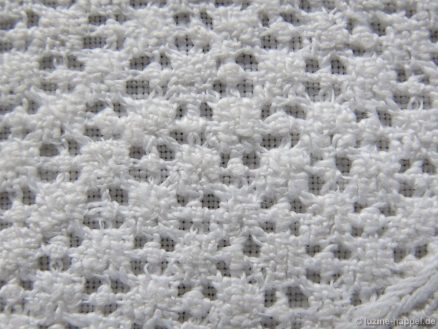
I have never before seen an openwork pattern made with a combination of Rose and Four-Sided stitches.
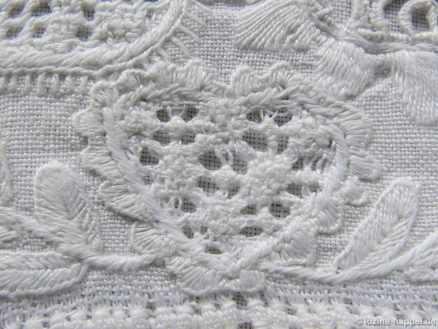
The small heart was filled with the same pattern, but thread withdrawing was made by cutting 3 – leaving 3.
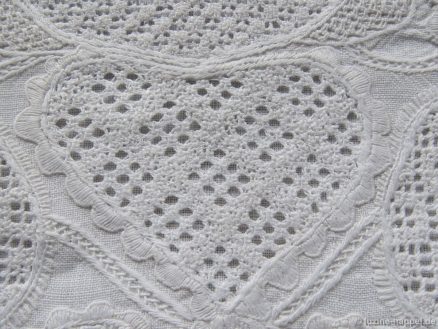
The large heart in the center was filled with a Rose stitch pattern in openwork without a Cable stitch grid.
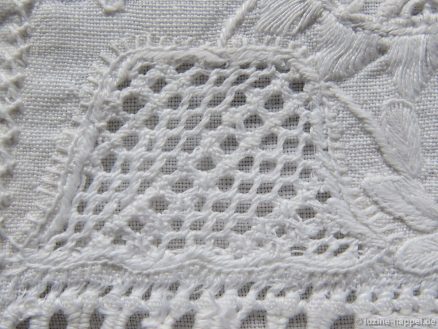
Also without a Cable stitch grid, rows of Rose stitches alternate with rows of Cable stitches.

The last motif shows a Rose stitch pattern worked in an openwork Cable stitch grid.
In this example, we see a couple of elements that are typical of early Schwalm whitework: wide stem stitches instead of Coral Knot stitches for the outlining and the stems, double-line stems filled with Herringbone stitches. In addition, there is an absence of tendrils and one filling pattern without thread withdrawing.
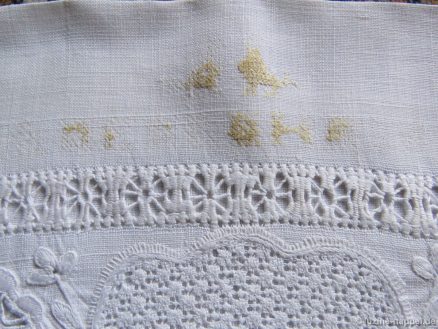



Leave a Reply